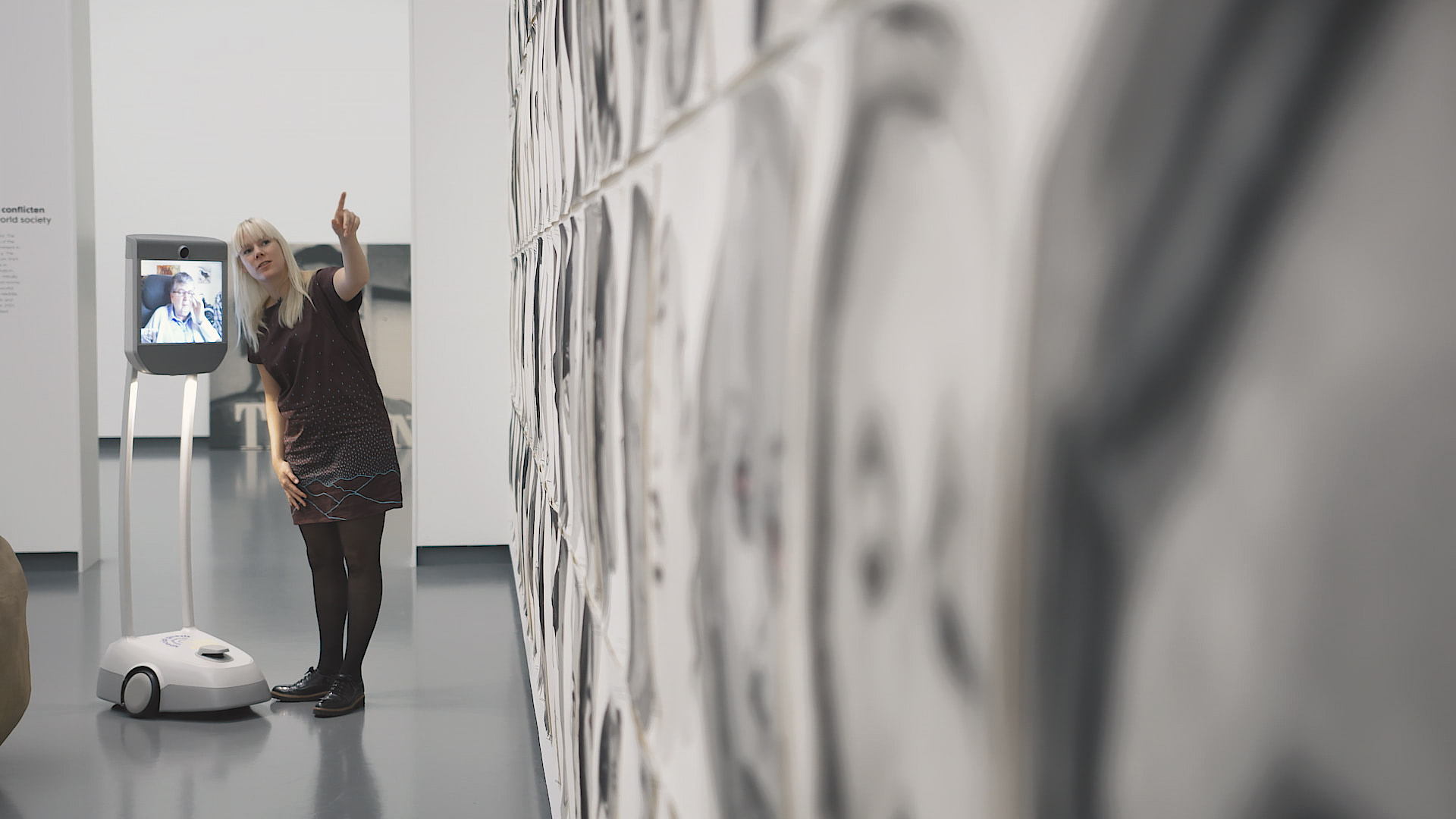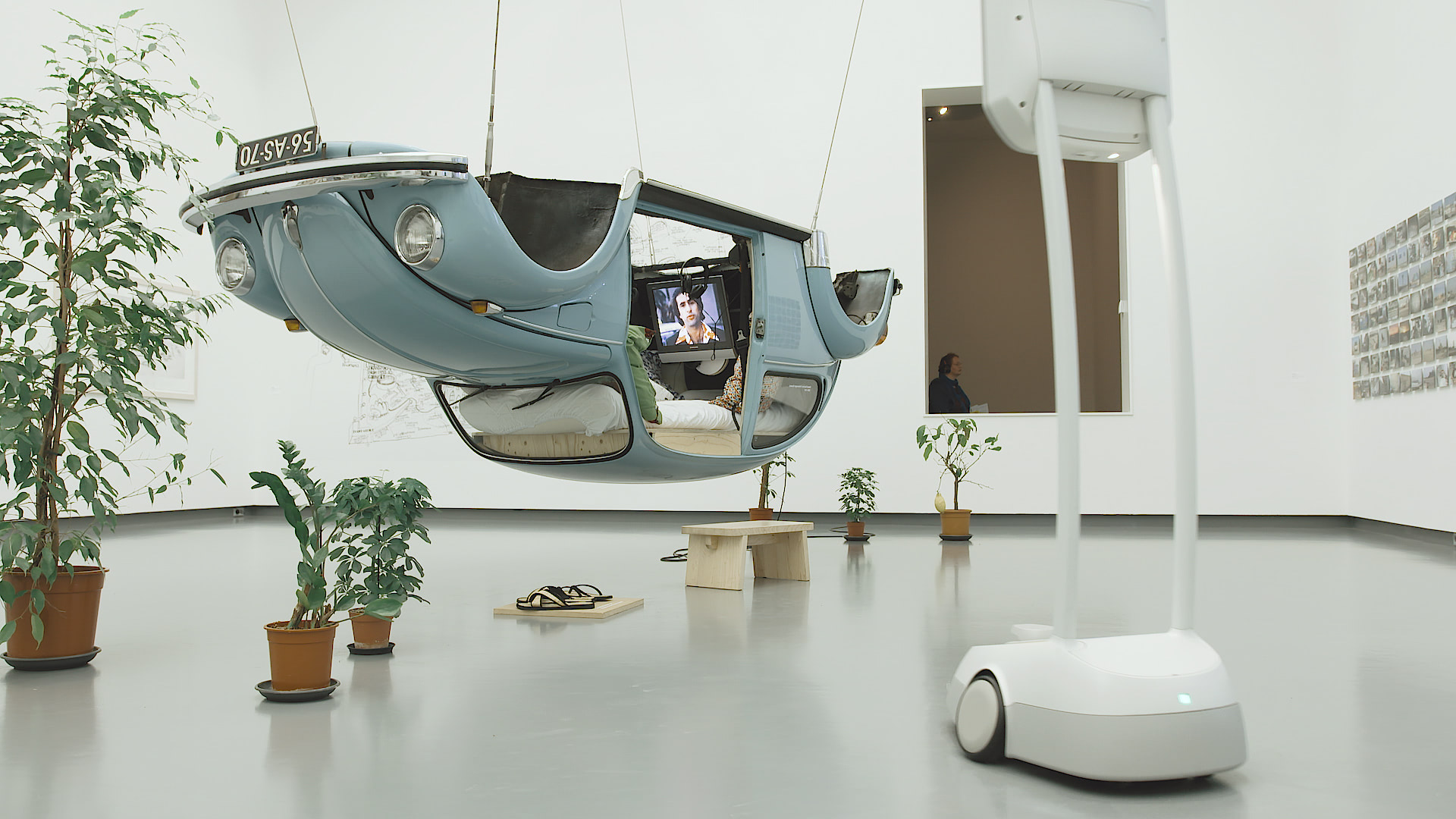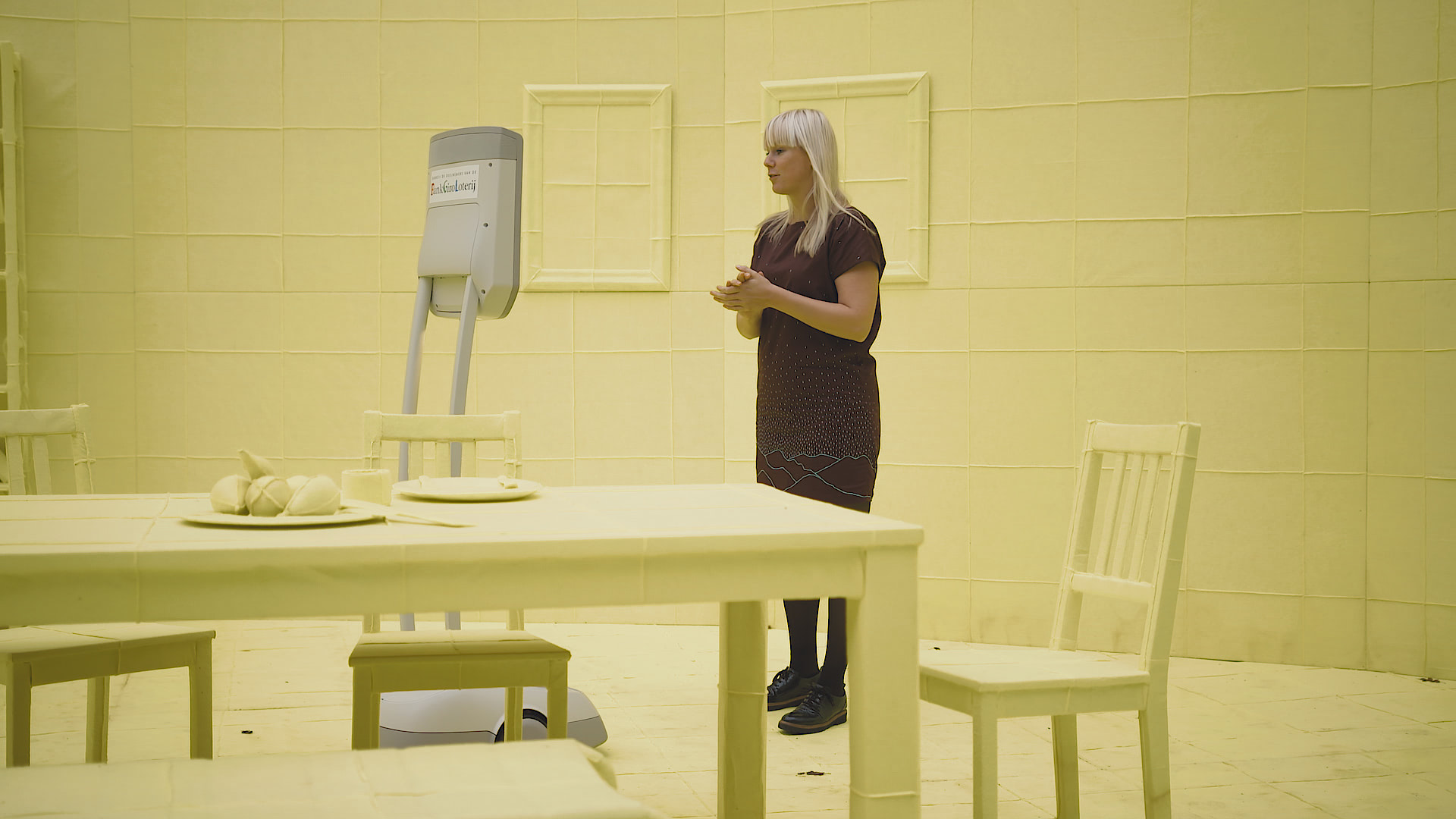Don’t be surprised when you catch a human face on a screen strolling through the Van Abbe museum for contemporary art in Eindhoven, as these are Europe’s very first robotic museum-tours that offer a ‘digital door’ to the museum for those who are not physically able to attend. We spoke with Marleen Hartjes, project leader of the Special Guests programme of the museum, and explored with her the potential of this highly evolved form of “Skype on wheels”.
Marleen Hartjes, accessibility manager at the Van Abbe museum, passionately seeks for ways to make the museum accessible to everyone. Through the 'special guests' programme, Marleen develops experiences for those who are blind, deaf, or suffer from Alzheimer's disease. But there's more. For museum visitors residing in hospital waiting rooms, she developed an app that contains videos of art pieces, narrated by children’s interpretations and stories. Today, she shares with us how her project enables a rather special visit for those who cannot physically attend the museum. That is, through a "telepresence robot".
Marleen states, “We have Europe’s first robot that is active on a daily basis in a museum.” Anyone around the world can order such a robotic museum tour, and is accompanied by a human guide. All you need to do is to log on to the robot-controlling interface from your desktop. This is humane technology at its finest!
 Marleen Hartjes guides a special guest who is visiting the museum via a robot.
Marleen Hartjes guides a special guest who is visiting the museum via a robot.
A wealth of new audiences
These robotic tours open up many new pathways for people to visit the museum. Marleen explains: “I think technology like robots offer a huge opportunity to encounter new audiences. At the start, it was simply a tool to overcome visitors' physical boundaries, but, it allows for so many more audiences.”
This technology brings the museum a rich set of new audiences. “Classrooms can now have a museum visit, one that does not require the logistics of a fully planned excursion day.” Moreover, “we have a project with artists from Afghanistan who visit monthly, as they do not have access to contemporary art in their country. [...] We can also allow people in jail to visit the museum, so they’re at two places at the same time!” According to Marleen, “the robot thus has a lot to do with the sense of freedom to be in a different place.”
Besides broadening audiences, this technology has changed workplace dynamics as well. “Usually when I had a meeting in Amsterdam or Belgium, I would drive all the way there, or perhaps use Skype. Similarly, during seminars or symposia, we want to invite people from all over the world to speak. These things are very costly. With the robot, we can just let them log in for an hour, and have them a physically present through the robot.
The freedom of telepresence: being in two places, at the same time.
Technology like VR and AR can invite us into virtual worlds, adding layers of information that accompany the physical world. But technology can also allow us to be in two places, at the same time. This new sense of freedom offered by technology, is what Marleen refers to as “telepresence”.
Marleen is keen to highlight that the tourguides shouldn’t just be called ‘robots’. She explains, “we use one word to describe all machines that interact with space and do something; ‘robots’. Instead, we need to have a wealthy pool of species names.”
“What’s most important about this species of robot, and what distinguishes it from Skype or other robots, is that the visitor is physically present and can interact with space. So it's a little bit like Skype on wheels, in a highly evolved version.”

This aspect of physical telepresence did not come without complications. “For instance, my grandmother finds it very hard to understand what the Internet is, let alone that you can be in two places at the same time, that is very abstract to people.” The solution? “In the tours, we specifically make a visit to a mirror in the museum. While seeing themselves, visitors realize it’s not just a video: they are actually standing in the museum.” She elaborates: “I think for most people it feels like science fiction."
"Technology opens up new ways of connecting with people"
Physical telepresence comes with another important effect. “The reason we choose a robot over VR, is that we wanted to allow the visitors to interact with people. Otherwise, a digital visit would be a lonely experience. Technology opens up new ways of connecting with people, but can simultaneously be considered a threat to real connections - and real interactions with people. Therefore, the telepresence robot does allow such interactions. This way, the digital visitors are actually able to meet the physical visitors."
Similar to our HUBOT tour guides, the human touch to the robotic technology is essential. “The guides give a personal touch to a museum visit. The exhibitions are just telling one part of the story; the interaction or the conversation that people have about art is just as important.”
The digital door is just another way to enter the museum
“One of the questions we were asking ourselves was: is the robotic tour a threat to our normal museum visit?”
“But, I don’t think so.” Hartjes emphasizes. Her argument comes directly from her experiences: “We discovered with our special guests programme, where we are working together with people who are for instance blind or have other physical disabilities, that just "seeing" art is not the full experience. The physical presence of a human body in space, and the information we gain through other senses than our eyes, are almost evenly important for the experience. Our blind visitors also love to visit the museum!”
“I think technology is enriching the experience; it is not replacing it”
So, besides interaction, conversation, and seeing the exhibitions, “you need the entire body to experience the art work.” Digital technology can not just yet offer similar experiences that live up to the physical visit.
Thus, the robot is not challenging the real visits. “I think technology is enriching the experience; it is not replacing it. The robotic tours are just another way to enter the museum, it is a digital door.”
 Robotic visitor is exploring the artwork at the Van Abbe Museum
Robotic visitor is exploring the artwork at the Van Abbe Museum
An inclusive future with technology
“I think technology can be a tool to ensure that a more diverse and a more broad audience can be part of our culture," Marleen tell us.
Besides overcoming physicial boundaries with the robotic tours, Marleen indicates another way in which technology may further accessibility: It could also overcome mental boundaries. “People with all kinds of cultural or social backgrounds do not feel represented in the museum, to whom we could be providing multi-layered storytelling in our exhibition spaces, through digital tools.”
“I think technology can be a tool to ensure that a more diverse and broad audience can be a part of our culture”
In the future, Marleen would like to continue to explore the potentials of other digital technologies, like for instance AI, AR and VR. She continues her research through her newest project STUDIO-I: a collaboration between the Stedelijk and the Van Abbe Museum, which aims to further inclusivity and accessibility of culture; for whom a museum visit is not a given.
Where her curiosity currently takes her? “Well, I would love to explore the potential of drones flying around in the museum, imagine a visit by drone! But that's really future-talking, for now drones in a museum context are very challenging security wise.”
Thank you for sharing your innovative thoughts and viewpoints with us, Marleen!

Share your thoughts and join the technology debate!
Be the first to comment